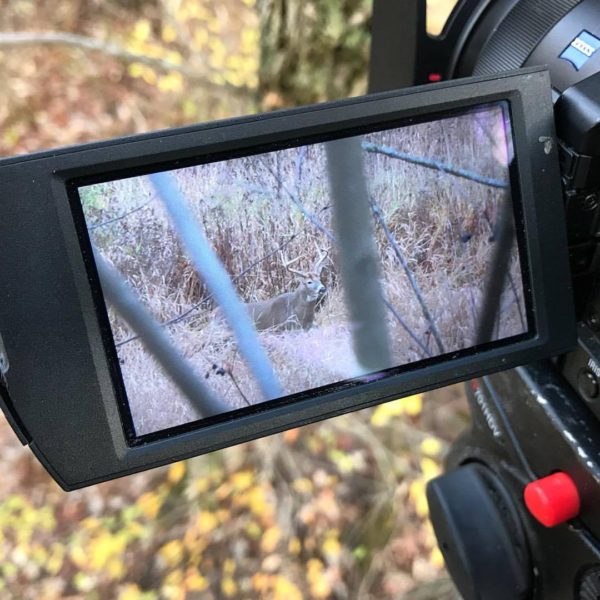
By Mark Kenyon
It started on October 24th and it ended this Monday, November 19th. My annual rut hunting marathon.
Over that stretch I hunted 26 of 27 days. 15 of those days were all-day sits. And I had encounters with my target buck 11 times.
I sat in temperatures from the teens all the way up into the 60s. I sat in rain and snow. I stood in wind and fog.
At times I sat for hours and saw nothing. Other times I saw dozens of deer in just minutes.
I experienced excitement and frustration. Joy and disgust. And while I didn’t fill a single tag, I did learn a few things along the way.
1. It doesn’t always have to be about you: My 2017 rut vacation was dominated by my obsession with finishing my three year hunt for “Holyfield.” It didn’t happen and it caused me a lot of frustration. But the few times I pulled myself away from that chase to spend time with friends and family ended up being the best parts of my entire rut hunting month. As much as individual goals and success matter, they surely shouldn’t be everything.
2. You can do it all right and still not have it come together: I’ve never worked harder, thought more carefully, planned more diligently, or been more strategic when it comes to hunting a specific deer. And still, I couldn’t kill him. Sometimes that’s just the way things go. Bad luck, wild animals, human error – we can’t control everything. And in the end, as a hunter trying desperately to hold onto his sanity, it’s important to remember this and come to terms with it. The alternative is misery. And that’s not the outcome any of us want.
3. But details do matter: Despite my inability to fill my tag on that one special buck, I was reminded again and again of the importance of details. There’s no way I would have had as many close calls with Holyfield as I did if it weren’t for my obsessive focus on doing all the little things right. I can point out many different examples of small things I did right that I believe helped my hunt. And while in the end it still wasn’t enough, I know deep in my bones that my hard work wasn’t entirely for nothing.
4. Focus, focus, focus: As important as hard work is, focus is just as crucial. I hunted all day 15 different times and with all that treestand time it’s easy get distracted or bored. Unfortunately, on November 7th, a few seconds of distraction on my phone led to me missing out on my best opportunity at Holyfield all year. At 11:00 AM, while I was looking at my phone, he was walking past me at 25 yards and when I finally heard him and turned to look, he spotted me and bolted.
5. Maybe a little rest is ok: I’ve always been one to say that you need to hunt every single day and hour possible during the rut. Because as we all know, it can happen at any second. But after hunting 26 out of 27 days and spending almost every single hour out in the tree this rut, I was also reminded of the very real impacts of burnout. Could this overdose of tree-time been part of what led to my lapse in focus on November 7th? Maybe being fresh and focused is just as important, if not more so, than just being in a tree? At a minimum, burnout certainly led to me not enjoying the rut as much as I should. Yes, achieving a goal is important and hunting hard during the rut was obviously going to be key in my achievement of that goal – but at what cost? At what point is the single-minded focus on killing a deer, at the expense of enjoying the hunt, not worth it anymore? I don’t have an answer. But I know I’ll be thinking about this a lot in the coming weeks and future seasons.
6. Sometimes deer do crazy things: I racked my brain to a maddening degree over the past month trying to figure Holyfield out. When would he appear? Where would he appear? Why did he go there? Where would he go next? How was he using this wind? How should I use this wind? I analyzed and organized, stared at data points and maps and weather forecasts and moon charts and spreadsheets and did I really figure anything out? I’m not sure. Looking back at my encounters and observations of Holyfield – a lot of it seemed pretty darn random. So while I think that a few basic rut principles did help my hunt (ie. focus on does – either on food sources or bedding areas), I also came to the realization that a lot of what was going on probably couldn’t be figured out at all, no matter how hard I tried. Coming to terms with this and embracing it, might be one of the very most important parts of hunting the rut.




